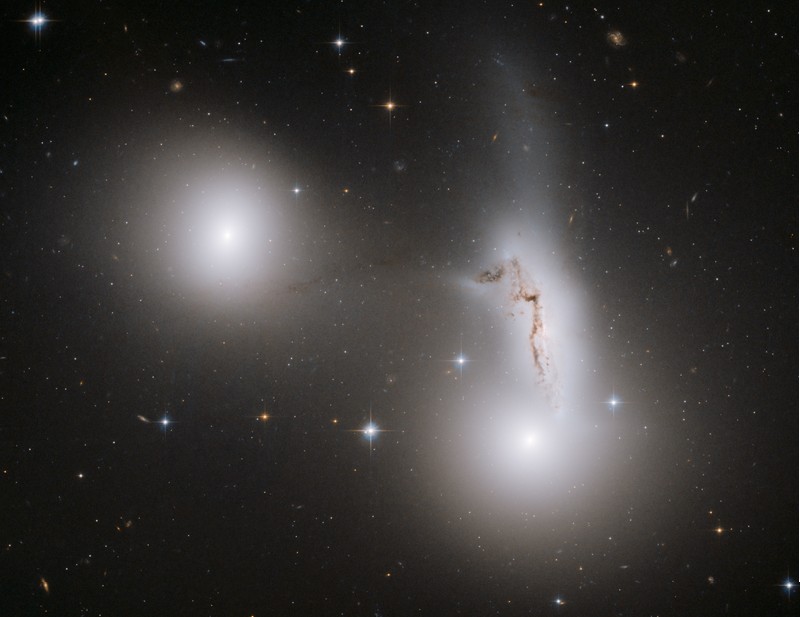Hickson Compact Group 90

Explanation:
Scanning the skies for galaxies, Canadian astronomer
Paul Hickson and colleagues identified some 100 compact
groups
of galaxies, now appropriately called
Hickson Compact Groups (HCGs).
This sharp Hubble image
shows one such
galaxy group, HCG 90,
in startling detail.
Three galaxies are revealed to be strongly interacting:
a dusty spiral galaxy stretched and distorted between a pair of
large elliptical galaxies.
The close encounter will trigger
furious star formation.
On a cosmic timescale, the gravitational tug of war will eventually
result
in the merger of the trio into a large single galaxy.
The merger process is
now understood to be a normal part of the evolution of
galaxies, including
our own Milky Way.
HCG 90 lies about 100 million light-years away in
the constellation
Piscis
Austrinus.
This Hubble view
spans about 80,000 light-years at that estimated
distance.
Of course, Hickson Compact Groups also make for
rewarding viewing for Earth-bound astronomers
with more modest sized telescopes.
Authors & editors:
Robert Nemiroff
(MTU) &
Jerry Bonnell
(USRA)
NASA Web Site Statements, Warnings,
and Disclaimers
NASA Official: Jay Norris.
Specific
rights apply.
A service of:
LHEA at
NASA /
GSFC
& Michigan Tech. U.

